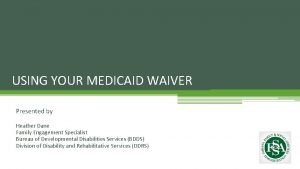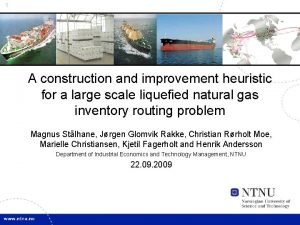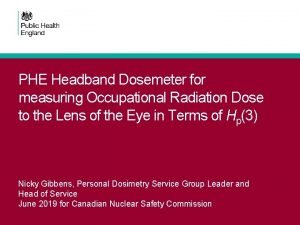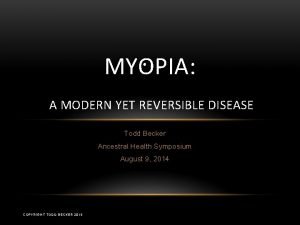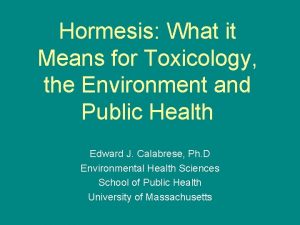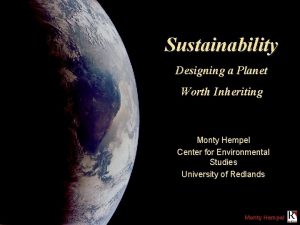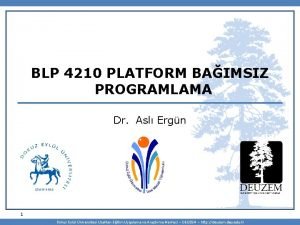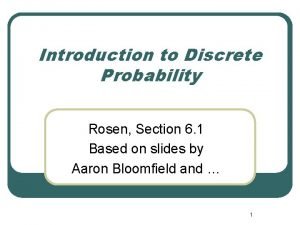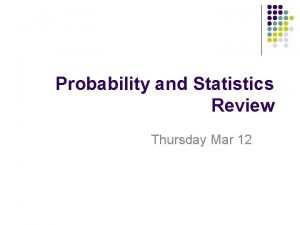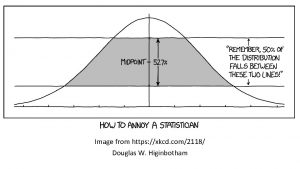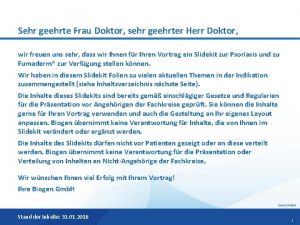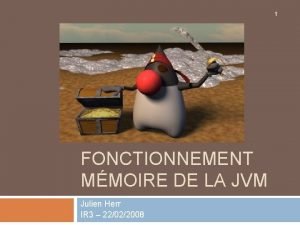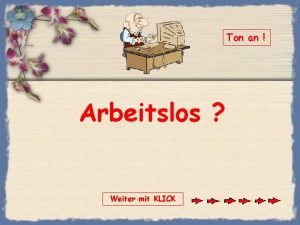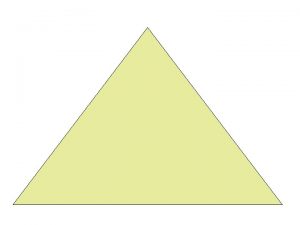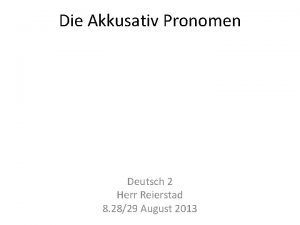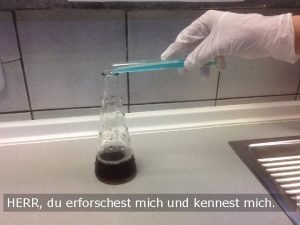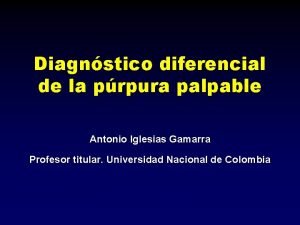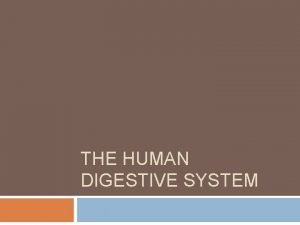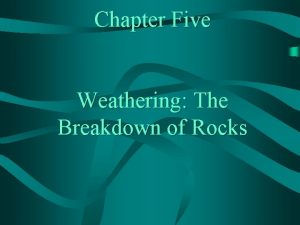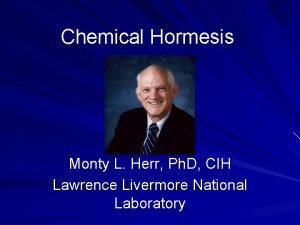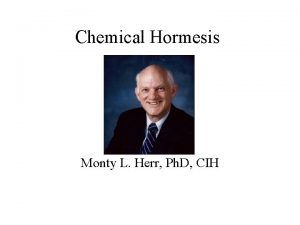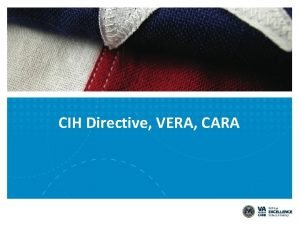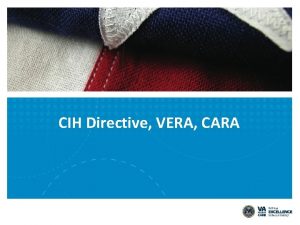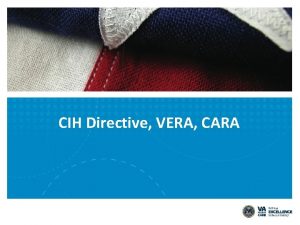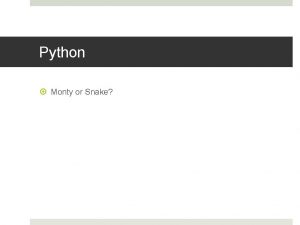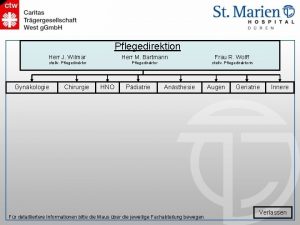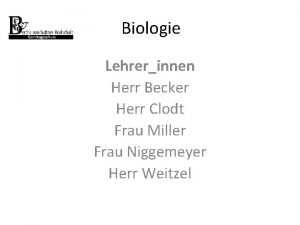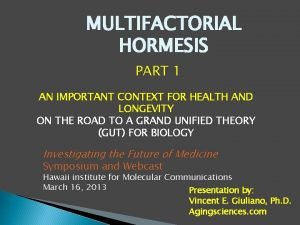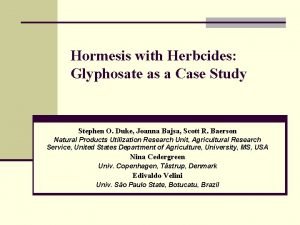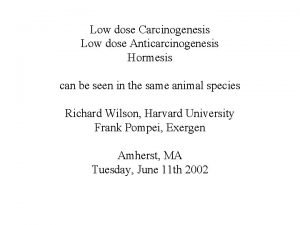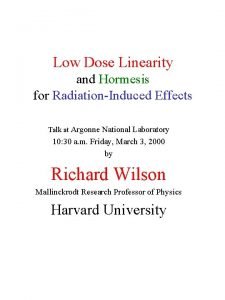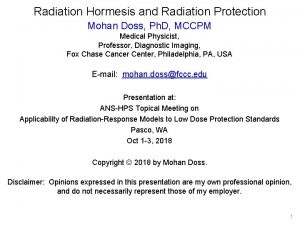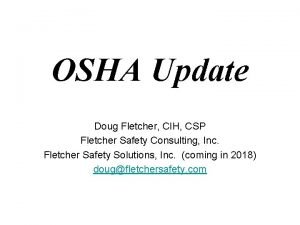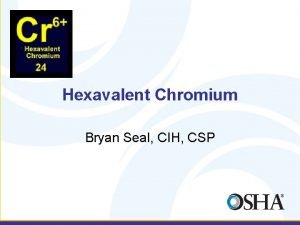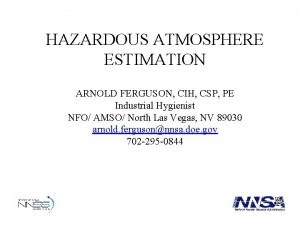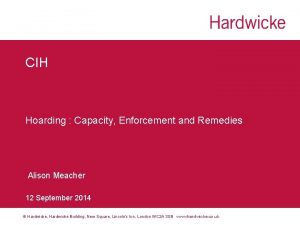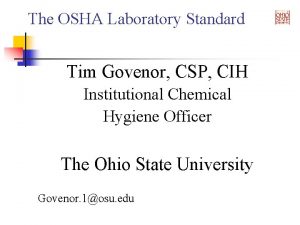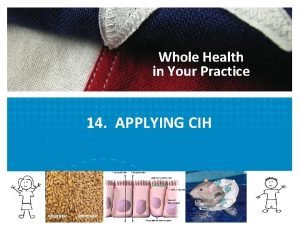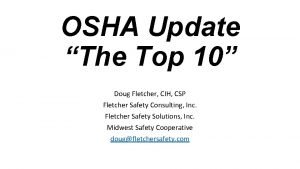Chemical Hormesis Monty L Herr Ph D CIH







































- Slides: 39

Chemical Hormesis Monty L. Herr, Ph. D, CIH Lawrence Livermore National Laboratory

2004 AIHCe Roundtable 243 Chemical Hormesis and Industrial Hygiene: Are We Over-Controlling Exposures? Edward J. Calabrese -- The Maturing of Hormesis as a Credible Dose. Response Model John Doull -- The Impact of Hormesis on the Evolution of Risk Assessment Michael Jayjock -- Hormesis and the Setting of Occupational Exposure Limits Gary E. Marchant -- Regulatory Applications and Acceptance of Hormesis Kenneth A. Mundt -- What Can Epidemiology Contribute to the Concept of Chemical Hormesis? Joseph V. Rodricks -- What Needs to Be Done if Hormesis is to Influence Public Policy?

February 13, 2003 Dangerous levels of toxins miscalculated Potential pollutants and poisons may be beneficial in low doses.

September 2003 HORMESIS: Nietzsche's Toxicology Whatever doesn't kill you might make you stronger

October 17, 2003 HORMESIS: Sipping From a Poisoned Chalice

June 9, 2003 A Little Poison Can Be Good For You The received wisdom about toxins and radiation may be all wet.

December 12, 2003 A scientist finds benefit in small doses of toxins AMHERST -- Edward J. Calabrese, a grayhaired man who works in a rundown office surrounded by documents on highly toxic chemicals, has an explosive idea.

Dose-Response Assessment The process of characterizing the relation between the dose of an agent administered or received and the incidence of an adverse health effect in exposed populations and estimating the incidence of the effect as a function of human exposure to the agent.

Toxicity Assessment Noncarcinogenic Effects · Threshold Response · Can determine a no-effect level

Dose-Response Curve Threshold Response Case 100% o o Toxic Response Probability NOAEL 0, 0 Dose or Exposure o

Toxicity Assessment Carcinogenic Effects Nonthreshold response No dose is risk free

Dose-Response Curve 100% Zero Threshold Linear Response Case o Toxic Response Probability 0, 0 o Zero Threshold Dose or Exposure o

Dose-Response Curve 100% Non-Linear Response Case - Hormesis o Toxic Response Probability o 0, 0 Dose or Exposure o

Hormesis Curve

Chemical Hormesis Calabrese, Edward J. and Baldwin, Linda A. , “The Dose Determines the Stimulation (And Poison): Development of a Chemical Hormesis Database, ” International Journal of Toxicology 16: 545 -559 (November-December 1997) Biological Effects of Low Level Exposure (BELLE) www. belleonline. com Low-dose stimulation/high-dose inhibition - Arndt -Schultz Law

Paracelsus “What is it that is not poison? All things are poison and none without poison. Only the dose determines that a thing is not poison. ”

Definition of Hormesis Low-dose stimulation followed by higher dose inhibition.

Criteria used to judge data for evidence of hormesis – The magnitude of the low dose stimulatory response – The number of doses establishing the reliability of the beta-curve – Statistical power – The reproducibility of the findings

To evaluate high conformity to the beta-curve Establishment of an endpoint-specific lowest observed effect level (LOEL) and no-observed-effect level (NOEL) expected to have 4 doses distributed relative to the NOEL.

Toxicology Study Evaluation Example 1

Toxicology Study Evaluation Example 2

Toxicology Study Evaluation Example 3

Toxicology Study Evaluation Example 4

Example 1 Low doses of phosfon, a herbicide, caused plants to grow better CALABRESE AND HOWE, PHYSIOL. PLANT. 37, 163 (1976)

Example 2 A little cadmium causes water fleas to produce more young BODAR ET AL. , AQUATIC TOXICOL. 12, 301 (1988)

Example 3 Small amounts of carcinogenic dioxin reduces tumors in rats KOCIBA ET AL. , TOXICOL. APPL. PHARMACOL. 46, 297 (1978)

Results of initial screening organized by agent Alcohol and metabolites Antibiotics Auxin related Hydrocarbons Metals Herbicides Insecticides Fungicides Pesticides Miscellaneous Percent 6. 2 7. 9 4. 6 3. 4 29. 6 7. 2 6. 1 1. 5 2. 9 30. 6

Results of initial screening organized by endpoint Endpoint Percent Growth 62. 2 Metabolic Effects 15. 2 Longevity 5. 2 Survival 5. 7 Reproduction 5. 7 Miscellaneous 5. 8

Results of initial screening organized by test model Test Model Bacteria Protozoa Fungi Plants Animals Percent 9. 3 3. 0 6. 4 34. 9 46. 3

Generalizability of Hormesis Numerous species Broad range of chemical classes Broad range of biological endpoints

Assessing Characteristics of Chemical Hormetic Dose/Response Zone Data evaluated with respect to: – Dosage range of hormetic zone – Maximum stimulatory response – Magnitude of dosage difference from maximum to NOEL.

Hormesis Curve

If Hormesis Exists and Is Widely Generalizable, Why Is It Infrequently Observed? Study design – Influence of safety evaluation – Dose intervals – Not looking for non-adverse effects

A Priori Frequency of Hormesis Examined literature to determine the prevalence of hormesis. 3 journals Reviewed articles 1. experimental data, 2. used (non-dosed) controls, 3. could show excess responses, 4. had 2 doses at and/or below the NOAEL 5. had at least one dose showing inhibition.

A Priori Frequency of Hormesis 20, 285 articles screened 195 articles (1%) contained 668 relationships meeting entry criteria. 245 (37%) showed evidence of hormesis

Recent Titles Calabrese, E. J. , Baldwin, L. . A. “Hormesis: The doseresponse revolution, ” Annu. Rev. Pharmacol. 43: 175 -197 (2003) Calabrese, E. J. , Baldwin, L. A. , “The hormetic doseresponse model is more common than the threshold model in toxicology, ” Toxicol. Sci. 71 (2): 246 -250 (Feb. 2003) Calabrese, E. J. , Baldwin, L. A. “Toxicology rethinks its central belief - Hormesis demands a reappraisal of the way risks are assessed, ” Nature 421 (6924): 691 -692 (Feb. 13, 2003)

Human Health Research Strategy for Improving Risk Assessment A possibility that needs to be recognized and incorporated into the research on aggregate and cumulative risk is an awareness of potentially positive or adaptive biological responses associated with low-level exposures. It is anticipated that a Ushaped dose-response curve at low (environmentally relevant) concentrations of single and multiple compounds could be quite common …. This information could be exceedingly valuable in identifying practical thresholds of human response in defined populations which in-turn could speak to the potential impact of any risk management activity aimed at lowering human exposure. The panel suggests that nonmonotonic dose-response proximate to actual exposure levels is a potential outcome (hypothesis) that should be incorporated into this research.

Implications for Risk Communication Hormesis challenges past dogma. Toxic substances may be beneficial at low doses Hormesis seems like a chemical industry gimmick. Pollutants always characterized as harmful

Is the public ready for this?
 Lied herr du bist mein leben
Lied herr du bist mein leben Heather dane
Heather dane Routing number cih
Routing number cih Cih cif
Cih cif Hormesis headband
Hormesis headband Ophthalmologica
Ophthalmologica Hormesis
Hormesis Monty hempel
Monty hempel Monty python
Monty python Monty shooltz
Monty shooltz Monty hall
Monty hall Monty hall dilemma
Monty hall dilemma Hair and body workshop montmorency
Hair and body workshop montmorency Dr anne monty
Dr anne monty Imperceptive synonym
Imperceptive synonym Monty python argument
Monty python argument Inurl:twitter.com
Inurl:twitter.com Why is chapter 6 called the overpaid maid
Why is chapter 6 called the overpaid maid Immer bist du herr bei mir
Immer bist du herr bei mir Pasi
Pasi Julien herr
Julien herr Vor dem hause steht ein dicker mann und lacht
Vor dem hause steht ein dicker mann und lacht Psalm 24 der herr ist mein hirte
Psalm 24 der herr ist mein hirte Uni passau sprachenzentrum
Uni passau sprachenzentrum Er sandte sein wort und heilte sie
Er sandte sein wort und heilte sie Herr winkler ich bin arbeitslos
Herr winkler ich bin arbeitslos Psalm 139 1-2
Psalm 139 1-2 Akkusativ pronomen deutsch
Akkusativ pronomen deutsch Herr du erforschest mich und kennest mich
Herr du erforschest mich und kennest mich Keuner-geschichten beispiele
Keuner-geschichten beispiele Sabina herr
Sabina herr Herr dr. medic. (im tem.) adrian balint
Herr dr. medic. (im tem.) adrian balint Chemical reactions section 2 classifying chemical reactions
Chemical reactions section 2 classifying chemical reactions Chemical reactions section 1 chemical changes
Chemical reactions section 1 chemical changes Chemical reactions section 2 classifying chemical reactions
Chemical reactions section 2 classifying chemical reactions Love chemical formula
Love chemical formula Chapter 7 review chemical formulas and chemical compounds
Chapter 7 review chemical formulas and chemical compounds Are kc and kp equal
Are kc and kp equal Esophogu
Esophogu Whats the definition of weathering
Whats the definition of weathering

